Greenhouse farming is an agricultural system where crops are grown in a controlled environment. Temperature and humidity are regulated in a greenhouse to create optimal plant growth conditions. Greenhouses can be used to grow various crops, including fruits and vegetables. Greenhouses allow farmers to control the environment inside the structure, providing a more stable and consistent crop climate. In addition, greenhouses can protect crops from pests and diseases. Greenhouse farming in Haryana is a rapidly growing sector with immense potential.
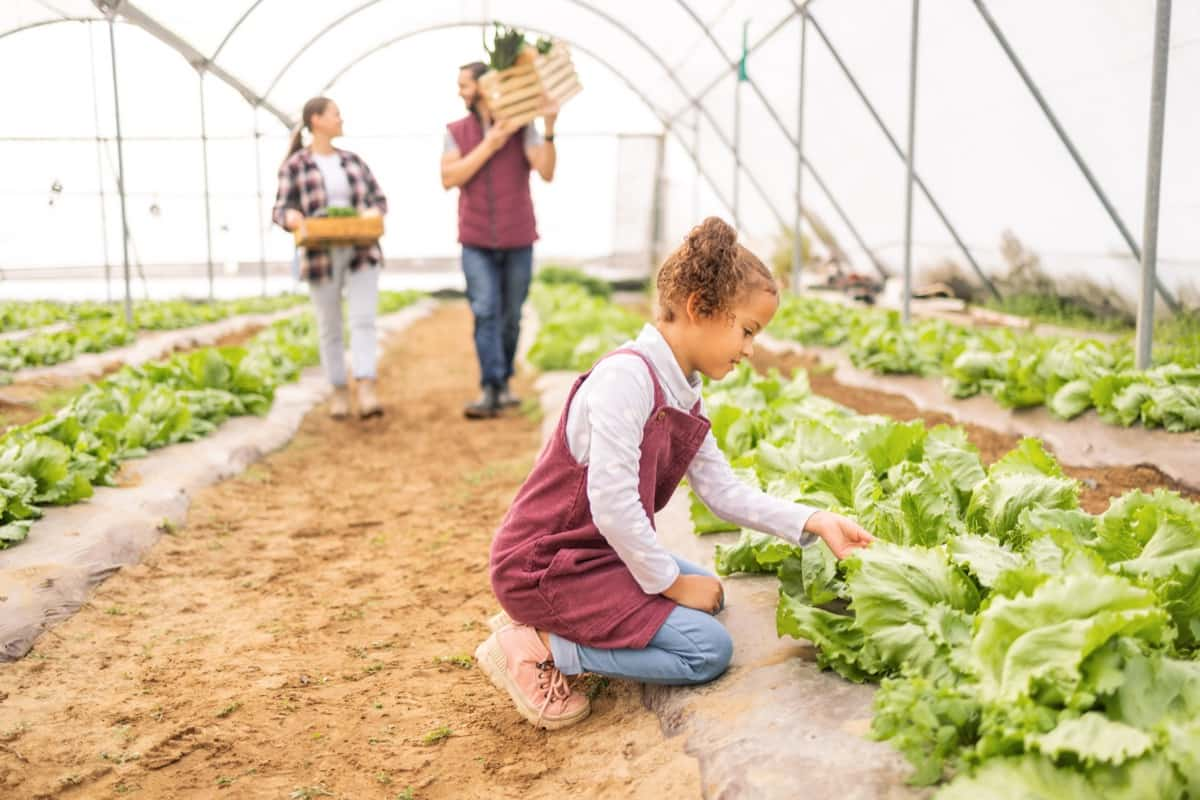
How to Start Greenhouse Farming in Haryana
Benefits of Greenhouse Farming in the Haryana
- The benefits of greenhouse farming include year-round production, protection from pests and diseases, and improved water efficiency.
- Greenhouse farmers can produce a wide variety of crops throughout the year, which has led to increased incomes and improved food security. In addition, greenhouses offer protection from pests and diseases that can damage or destroy crops.
- It can reduce water usage by up to 70% compared to traditional open-field agriculture. The increase in the number of greenhouses is due to a combination of factors, including government support, favorable climate conditions, and the many benefits of this type of agriculture.
- Greenhouse farming has great potential to improve food security and income while protecting the environment. It is an agriculture system where crops are grown in protected environments. Greenhouses can grow various crops, including vegetables, fruits, and flowers.
- Greenhouse farming in Haryana is a type of agriculture where crops are grown in a controlled environment. It is a modernized form of agriculture that allows farmers to grow different crops all year round, irrespective of the weather conditions outside.
- The main advantage of greenhouse farming is that it protects crops from extreme weather conditions, pests, and diseases.
- Greenhouses can be used to produce vegetables, fruits, and flowers. It provides a controlled environment for plants, which can result in higher yields.
- Farmers in Haryana often use drip irrigation to water their greenhouse crops. Pest control is another important aspect of greenhouse farming in Haryana.
Greenhouse Vegetable Production in Haryana
It is a type of agriculture that involves cultivating vegetables under controlled conditions. Greenhouses provide an environment conducive to plant growth and protect plants from extreme weather conditions. Greenhouse vegetable production in Haryana has increased in recent years due to the introduction of new technology and the availability of subsidies and loans from the government.
The main types of vegetables grown in greenhouses in Haryana are tomatoes, cucumbers, bell peppers, and eggplants. These vegetables are in high demand among consumers due to their freshness and nutritional value. Greenhouse farmers in Haryana use a variety of pesticides and fertilizers to ensure that their crops are free from pests and diseases. They also use irrigation systems to provide adequate water to their plants.
Greenhouse vegetable production in Haryana has many benefits. It helps farmers increase their income, as they can sell their vegetables at higher prices than those grown outside greenhouses. Additionally, it allows farmers to grow crops all year round, regardless of the season. This type of agriculture also reduces the risk of crop failure due to extreme weather conditions.
In case you missed it: How to Start Poultry Farming in Haryana
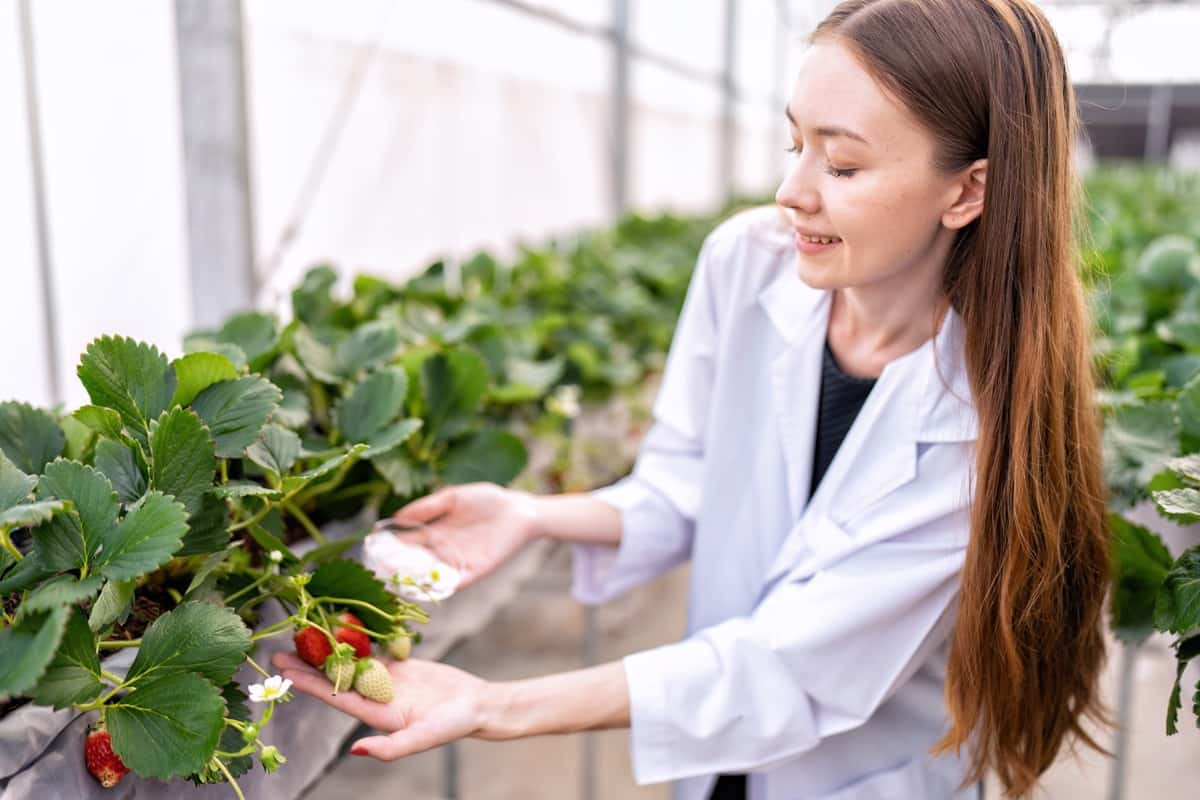
Is Greenhouse Farming Profitable in Haryana
- Greenhouse farming can be a very profitable venture in Haryana, provided the farmer takes the time to learn about the best crops to grow and chooses the right acreage for their needs. The climate in Haryana is well suited for greenhouse farming, and many different types of greenhouse structures can suit the farmer’s needs.
- Setting up a greenhouse farm will change depending on the structure size and type chosen, but it is typically quite affordable. Additionally, the government offers several subsidy and loan programs to help farmers start greenhouse farming.
Greenhouse Set-Up Cost in Haryana
The cost of setting up a greenhouse varies depending on the required size and type of structure. However, government subsidies and loans are available to help farmers cover the costs. The greenhouse farm set-up cost can range from Rs. 10 lakhs to Rs. 15 lakhs per acre.
This cost includes the price of the greenhouse structure and insulation, ventilation, and other necessary equipment. While the upfront cost of setting up a greenhouse may be high, the long-term benefits can be significant. In addition to producing crops year-round, greenhouse farming can also help protect crops from inclement weather and pests.
Crops are Grown Under Greenhouses in Haryana
Some commonly grown crops in greenhouses in Haryana include Tomatoes, Cucumbers, Capsicums, Chillies, and Flowers. Farmers can also grow other vegetables and fruits, such as Watermelons, Muskmelons, Grapes, Strawberries, etc., under controlled conditions. The cost of setting up a greenhouse varies depending on the structure size and type. However, the government of Haryana provides subsidies on the construction of greenhouses up to 50%.
In case you missed it: How To Buy Agricultural Land In Haryana
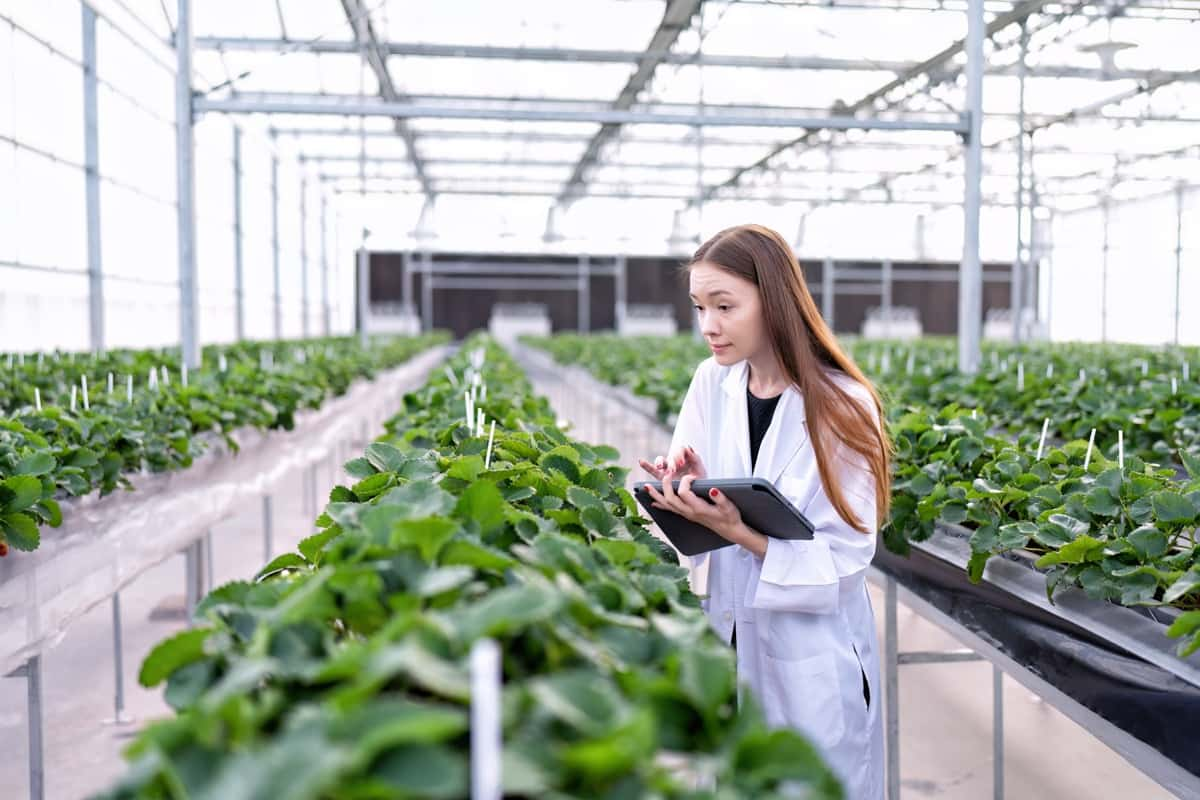
Types of Greenhouse Farms in Haryana
- Plastic tunnel greenhouses are the most popular type in Haryana due to their low cost and easy construction. Plastic tunnel greenhouses are made from a roll of clear plastic stretched over a metal or bamboo framework. These greenhouses provide good ventilation and light transmission but can be damaged easily by wind or hail.
- Metal-framed greenhouses are the most expensive type of greenhouse but also the most durable. Metal-framed greenhouses are made from a steel or aluminum frame covered with clear plastic. These greenhouses provide good ventilation and light transmission, but high winds can damage them if anchored properly.
- High-tech greenhouse farming in Haryana uses modern technology and equipment to create an optimal environment for crop growth. Greenhouses have automated systems that control temperature, humidity, and ventilation. These factors are crucial for successfully cultivating delicate crops like vegetables and flowers. High-tech greenhouse farming is practiced by large commercial farmers who have the necessary resources to invest in this type of agriculture.
Number of Greenhouses in Haryana
There are 1,206 greenhouses in Haryana. The majority of these are located in the districts of Hisar and Fatehabad. Greenhouse farming in Haryana has been growing in popularity in recent years. This is due to its many benefits, such as higher yields, better quality crops, and year-round production. The state government has supported this agriculture form and provided subsidies and loans to encourage farmers to adopt it.
In case you missed it: Organic Farming In Haryana, How To Start
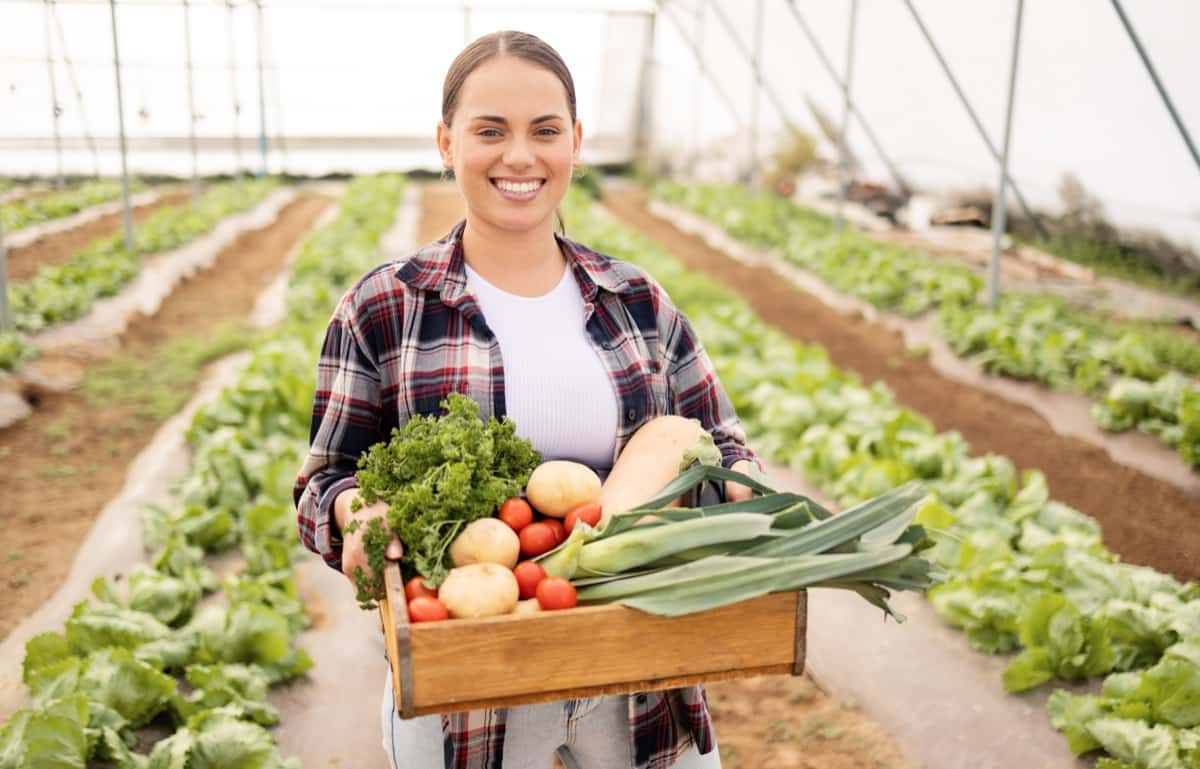
Create a Greenhouse Business Plan in Haryana
- Research the market potential for greenhouse crops in Haryana. This will give you an idea of which crops are in demand and what prices you can expect to get for them.
- The crop type to be grown in the greenhouse will depend on the season and market demand. Some of the popular crops grown in greenhouses in Haryana are – Tomatoes, Cucumber, Peppers, Eggplants
- Calculate the cost of setting up a greenhouse, including the cost of land, construction, equipment, and seedlings.
- Determine the source of financing for your project. You can get a loan from the government or private lenders.
- The operating costs for a greenhouse farm include labor, electricity, water, and other miscellaneous expenses.4. It is important to have proper ventilation and temperature control system in place to ensure optimal growth of crops in a greenhouse.
- Create a marketing plan to sell your products. You must identify your target customers and determine how to reach them with your marketing messages.
- You will also need to obtain the necessary permits and licenses from the government to operate a commercial greenhouse business in Haryana.
- Develop a production schedule considering the time required for growing, harvesting, and post-harvesting activities such as cleaning and packing.
- Finally, prepare a financial plan that includes income projections and expenses related to running the greenhouse business.
Can You Grow a Greenhouse Crops Year-Round in Haryana?
- In Haryana, the climate is suitable for greenhouse farming throughout the year. The average temperature in Haryana is 30°C, and the average rainfall is 100 cm. These conditions are ideal for growing a wide variety of crops in greenhouses.
- Greenhouses provide a controlled environment for crops, so farmers can manipulate various factors such as temperature, humidity, ventilation, and light exposure to create optimal crop growth conditions. This results in higher yields and better-quality produce.
- Greenhouse farming is relatively new in Haryana, but it is rapidly gaining popularity among farmers due to its many benefits. In addition to growing crops year-round, greenhouse farming allows farmers to use less water and fertilizer and reduce the risk of plant loss due to pests and diseases.
In case you missed it: Tomato Farming in Haryana for Maxium Profits
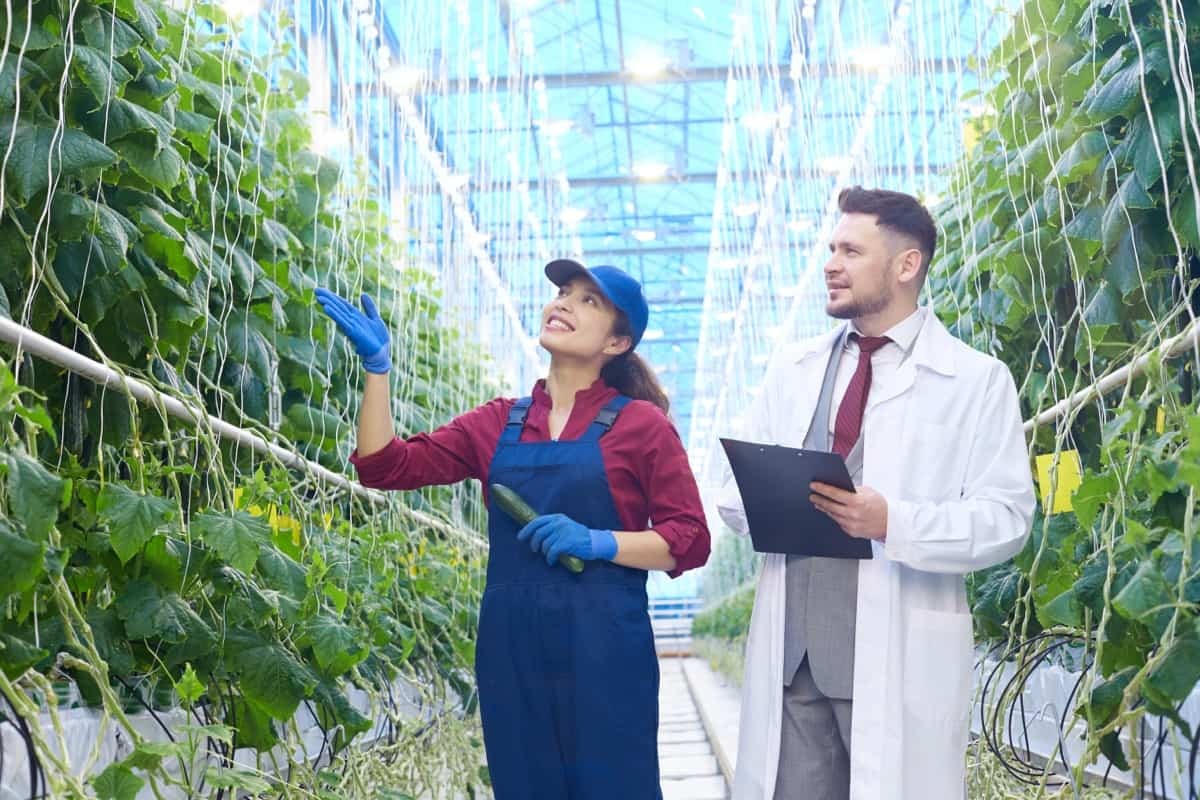
Key Rules for Starting Greenhouse Farming in Haryana
- Climate and soil are important considerations for successful greenhouse farming. In Haryana, the climate is hot and humid, with little rainfall. The average temperature ranges from 21°C to 47°C. The average annual rainfall is about 700 mm. The soil in Haryana is mostly sandy loam to clay loam.
- Greenhouses provide an optimal environment for crop growth by controlling temperature, humidity, light, and other factors.
- A greenhouse can be built using different materials such as wood, metal, or plastic. The most common type of greenhouse in Haryana is the plastic tunnel greenhouse.
- It is important to choose the right location for your greenhouse farm. The site should be level and well-drained, with good access to water and electricity. It should also be close to markets for selling your product.
- Before starting construction, it is necessary to obtain approval from the local authorities. Once the construction is complete, the next step is to install the necessary equipment, such as fans, vents, shading screens, and pumps.
- The crops commonly grown in Haryana greenhouses include Tomatoes, Cucumbers, Capsicums, and leafy vegetables.
In case you missed it: Glasshouse Farming: For Increased Yields and Reduced Pesticide Use
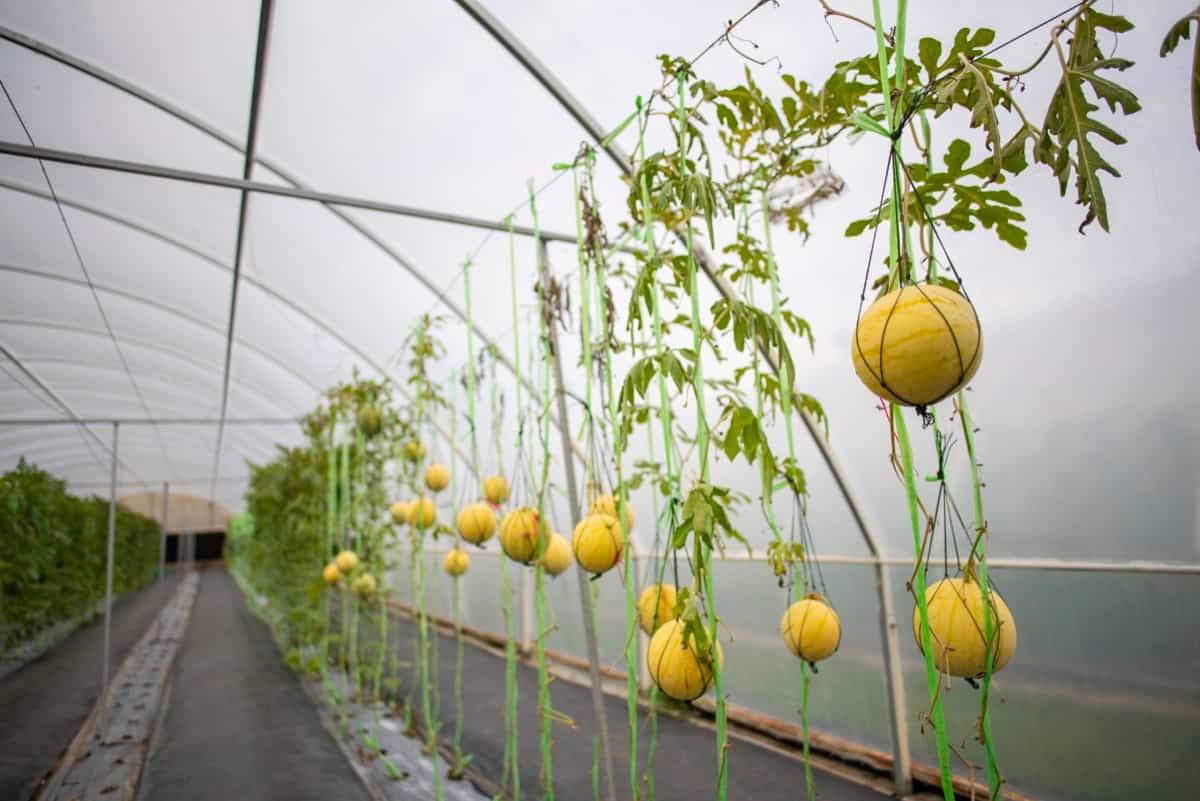
Challenges of Greenhouse Farming in Haryana
- High initial investment cost: Setting up a greenhouse requires significant money, which can deter many farmers.
- Subsidy and loan availability: Various subsidy and loan schemes are available for farmers wanting to set up greenhouses. However, the process is often complicated and time-consuming, making it difficult for many to access these benefits.
- Lack of technical know-how: Greenhouse farming is a relatively new concept in India. As such, farmers lack technical knowledge regarding the most effective cultivation methods. This often leads to suboptimal yields.
- Pest and disease control: Pests and diseases can be a major problem in greenhouses due to the enclosed environment. This can lead to heavy crop losses if not managed properly.
- Climate change: Climate change is an increasingly important issue globally, and it also impacts greenhouse farming in Haryana. Rising temperatures and changes in rainfall patterns can adversely affect crop growth and yield.
Greenhouse Farming Loans and Subsidies in Haryana
Various financial institutions also provide loans to set up a greenhouse. The repayment period for these loans is usually 5-7 years, with an interest rate of 7-9%. To encourage more farmers to take up greenhouse farming, the government has also introduced a scheme wherein farmers are given Rs. 10 lakhs per hectare for setting up a greenhouse.
The Indian government offers a variety of subsidies and loan schemes for farmers who want to set up greenhouses. The National Horticulture Mission provides subsidies for constructing greenhouses and purchasing inputs like seeds, irrigation systems, and plastic mulch. The Rashtriya Krishi Vikas Yojana also provides loans for greenhouse construction and the purchase of inputs.
The Haryana government has a scheme specifically for greenhouse farmers, providing subsidies of up to 50% of the construction cost. These subsidies and loans promote greenhouse cultivation and make it more affordable for farmers. Different greenhouse subsidies are;
- Subsidy on Greenhouse Construction: The government provides a subsidy of 30% on the cost of constructing a new greenhouse. This subsidy is provided by the Department of Agriculture, Haryana.
- Loan for Greenhouse Construction: Farmers can avail of loans up to Rs. 2 lakhs from banks or financial institutions for constructing a new greenhouse. The interest rate on this loan is 4% per annum.
- Subsidy on Greenhouse Covering Material: The government provides a subsidy of 50% on the cost of covering material used for constructing a new greenhouse. This subsidy is provided by the Department of Agriculture, Haryana.
- Subsidy on Shade Netting: The government provides a subsidy of 50% on the cost of shade netting used for constructing a new greenhouse. This subsidy is provided by the Department of Agriculture, Haryana.
In case you missed it: How to Grow Herbs in Aquaponics: Best Fish and Herbs for Creating Your Sustainable Aquaponic Garden
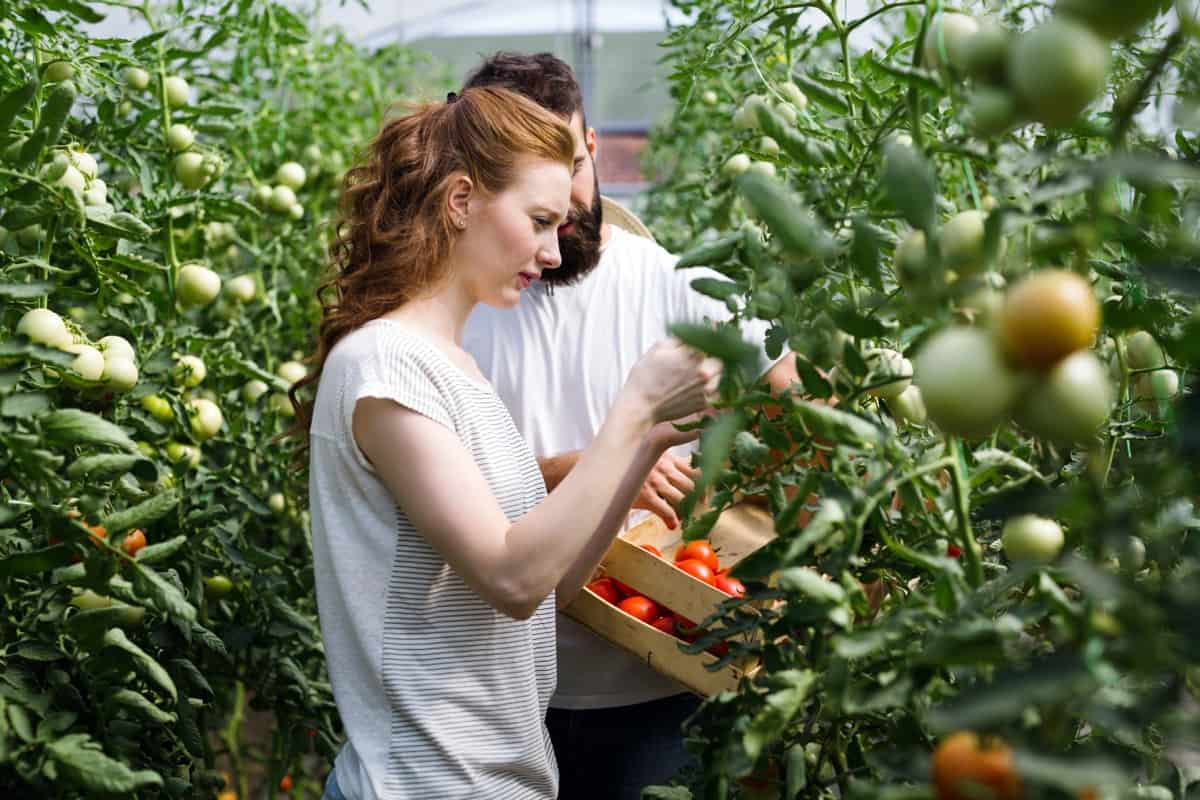
Conclusion
Greenhouse farming uses controlled environments such as greenhouses to grow crops. These environments provide the necessary temperatures, humidity, and light levels to support the growth of plants. Greenhouse farming is one of the most important methods farmers use to extend the growing season and improve crop yields.
- Types of Pesticides Used in Agriculture: A Beginner’s Guide
- Economical Aquaculture: A Guide to Low-Budget Fish Farming
- 15 Common Planting Errors That Can Doom Your Fruit Trees
- How to Make Houseplants Bushy: Effective Tips and Ideas
- Innovative Strategies for Boosting Coconut Pollination and Yield
- Pollination Strategies for Maximum Pumpkin Yield
- The Complete Guide to Chicken Fattening: Strategies for Maximum Growth
- Natural Solutions for Tulip Problems: 100% Effective Remedies for Leaf and Bulb-Related Issues
- Revolutionizing Citrus Preservation: Towards a Healthier, Greener Future
- Natural Solutions for Peony Leaf and Flower Problems: 100% Effective Remedies
- Maximizing Profits with Avocado Contract Farming in India: A Comprehensive Guide
- Natural Solutions for Hydrangea Problems: 100% Effective Remedies for Leaf and Flowers
- The Ultimate Guide to Choosing the Perfect Foliage Friend: Bringing Life Indoors
- From Sunlight to Sustainability: 15 Ways to Use Solar Technology in Agriculture
- The Ultimate Guide to Dong Tao Chicken: Exploring from History to Raising
- The Eco-Friendly Makeover: How to Convert Your Unused Swimming Pool into a Fish Pond
- Mastering the Art of Delaware Chicken Farming: Essentials for Healthy Backyard Flocks
- 20 Best Homemade Fertilizers for Money Plant: DIY Recipes and Application Methods
- How to Craft a Comprehensive Free-Range Chicken Farming Business Plan
- Brighten Your Flock: Raising Easter Egger Chickens for Beauty and Bounty
- How to Optimize Your Poultry Egg Farm Business Plan with These Strategies
- Subsidy for Spirulina Cultivation: How Indian Government Schemes Encouraging Spirulina Farmers
- Ultimate Guide to Raising Dominique Chickens: Breeding, Feeding, Egg-Production, and Care
- Mastering the Art of Raising Jersey Giant Chickens: Care, Feeding, and More
- Ultimate Guide to Raising Legbar Chickens: Breeding, Farming Practices, Diet, Egg-Production
- How to Raise Welsummer Chickens: A Comprehensive Guide for Beginners
- How to Protect Indoor Plants in Winter: A Comprehensive Guide
- Ultimate Guide to Grow Bag Gardening: Tips, Tricks, and Planting Ideas for Urban Gardeners
- Guide to Lotus Cultivation: How to Propagate, Plant, Grow, Care, Cost, and Profit
- Agriculture Drone Subsidy Scheme: Government Kisan Subsidy, License, and How to Apply Online
- Ultimate Guide to Raising Araucana Chickens: Breed Profile, Farming Economics, Diet, and Care
- Bringing Hydroponics to Classroom: Importance, Benefits of Learning for School Students
- Ultimate Guide to Raising Polish Chickens: Breed Profile, Farming Economics, Diet, and Care
- Ultimate Guide to Raising Australorp Chickens: Profile, Farming Economics, Egg Production, Diet, and Care
- Silkie Chicken Farming: Raising Practices, Varieties, Egg Production, Diet, and Care
- Sussex Chicken Farming: Raising Practices, Varieties, Egg Production, Diet and Care